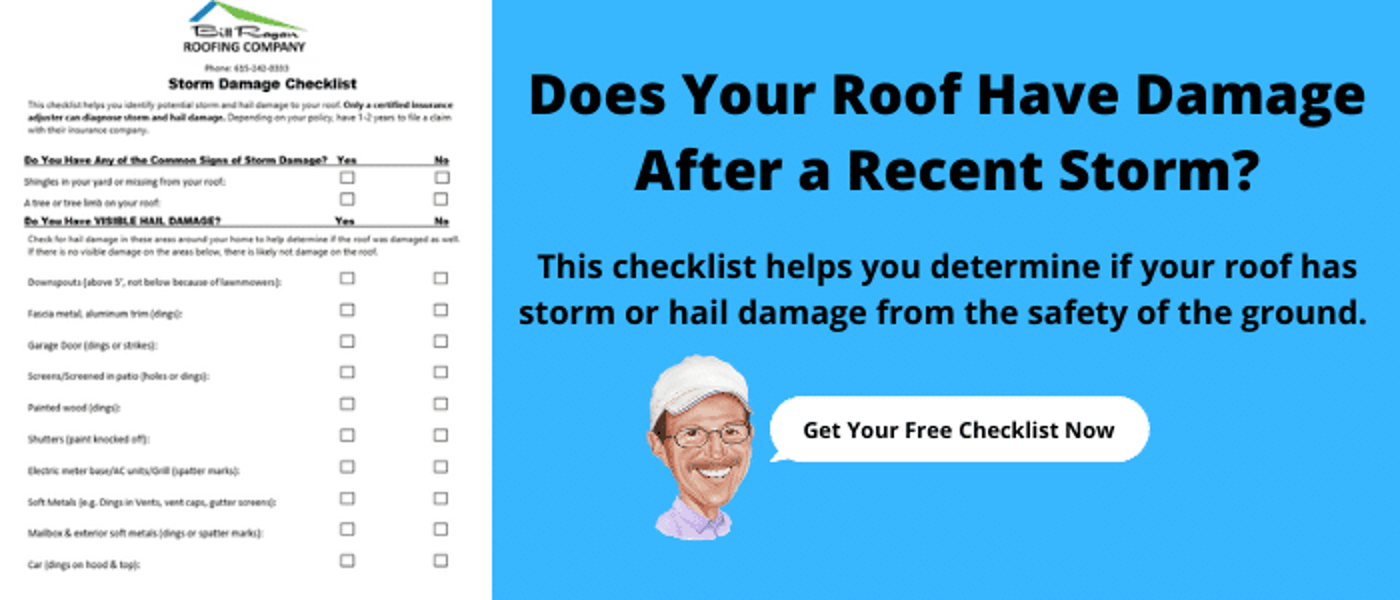5 Signs of Storm Damage to Your Roof
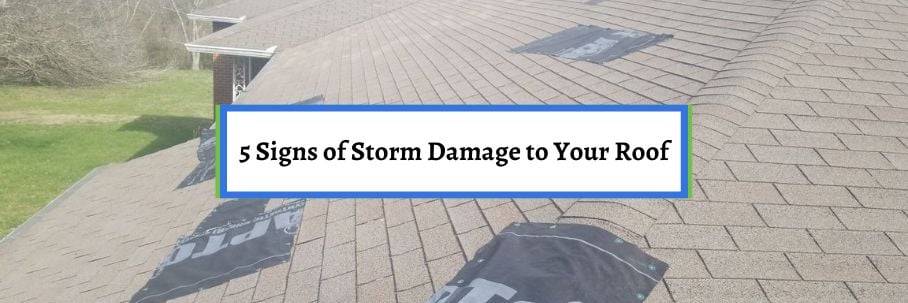
5 Signs of Storm Damage to Your Roof
There are 5 signs that help identify if your roof has storm damage:
- Dents on your gutters and things around your property
- Asphalt granules in your gutter or on the ground
- Missing, lifted, or creased shingles
- Dents in roof vents, roof flashing, and shingles
- Tree limbs or a full tree hitting your roof
Storm damage to your roof leads to leaks and, in many cases, the need for a new roof. This not only affects your wallet but it also causes unneeded stress.
Look, I get it; no one wants to experience roof damage. Unfortunately, things happen that are out of our control.
But the problem is that most homeowners don’t know they have roof damage until it’s too late. That’s why you need to know how to spot roof damage before a leak happens.
For over 30 years, the team at Bill Ragan Roofing has helped thousands of homeowners understand roof damage and what to do about it. Because of this, we’ll help you spot roof damage before it spirals out of control.
This article helps you identify the following 5 signs of storm damage to your roof:
- Dents on your gutters and things around your property
- Asphalt granules in your gutter or on the ground
- Missing, lifted, or creased shingles
- Dents in roof vents, roof flashing, and shingles
- Tree limbs or a full tree hitting your roof
1. Dents on your gutters and things around your property
The first sign of storm damage to your roof are dents on your gutters and downspouts. If hail was strong enough to dent your gutters, there’s a good chance that your roof has damage as well.
Downspouts are also a good indicator, but the dents need to be above 5 feet. If they’re lower, the insurance adjuster can easily blame a lawnmower kicking up rocks.
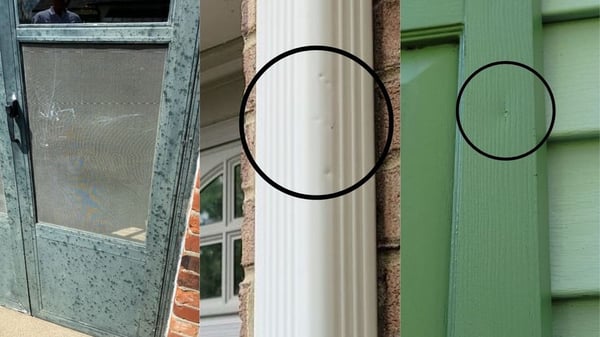
After checking your gutters and downspouts, you need to look for collateral damage to objects on the ground. This simply gives you more evidence to back up that your roof has storm damage.
Check the following objects and areas for collateral storm damage on the ground level:
- Dents or strikes on your garage door
- Holes in your window screens
- Dings to any painted wood or shutters
- Splatter marks or dings to your electric meter, AC unit, or grill
- Dents to your mailbox and other soft metals on your property
Now, it’s not 100% guaranteed that you have roof damage if you find collateral damage around your property. However, there's a good chance a storm damaged your roof if it was strong enough to damage things on the ground.
2. Asphalt granules in your gutter or on the ground
The next sign of storm damage to your roof is when there are loose asphalt granules in your gutters. Granules are embedded into asphalt shingles to make them fire-resistant, provide color, and protection from UV rays.
They are crucial to the longevity of an asphalt roof, so losing them is a clear indicator that it’s time for a roof replacement. If the storm damages your roof enough to warrant granule loss, the integrity of the shingles is definitely compromised.
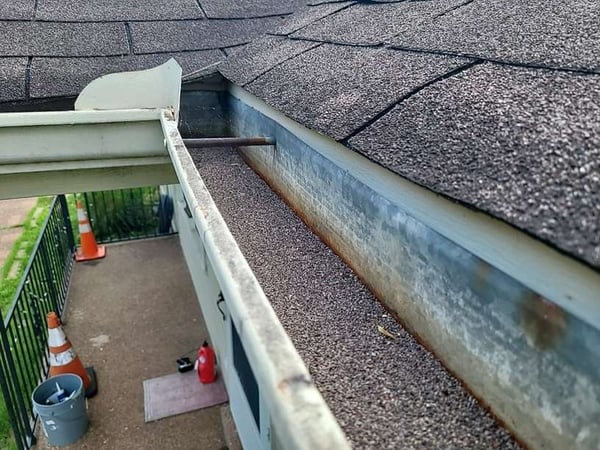
You’ll have no problem spotting this sign because your gutters will have a layer of granules in them. But you should also look in the areas on the ground around your downspouts for loose granules.
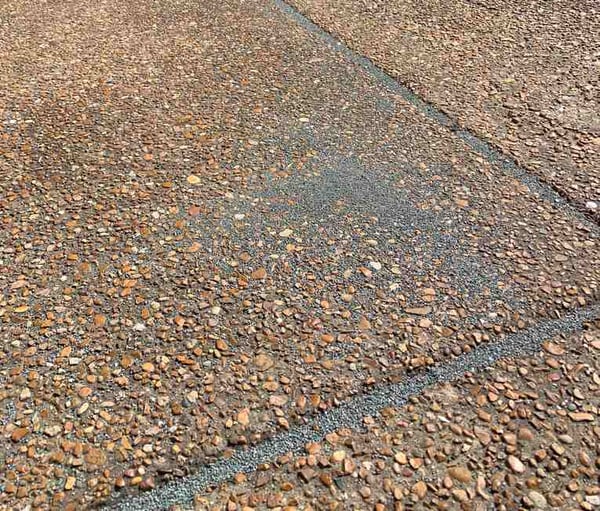
Remember that granule loss is a sign that it’s time for a replacement, so losing granules as the roof ages is perfectly natural.. This means finding loose granules may just be your older roof telling you it needs to be replaced.
3. Missing, lifted, or creased shingles
Moving away from the ground and gutters, let’s get to the signs of storm damage that are actually on the roof. The biggest sign of storm damage to your roof is missing, lifted, or creased shingles.
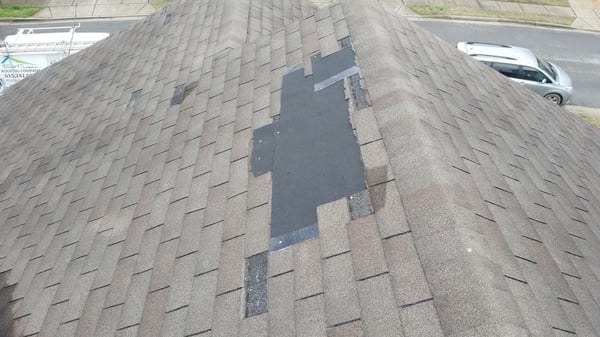
Obviously, missing shingles littering your yard are the easiest to spot. However, you need to be on the roof to find lifted or creased shingles.
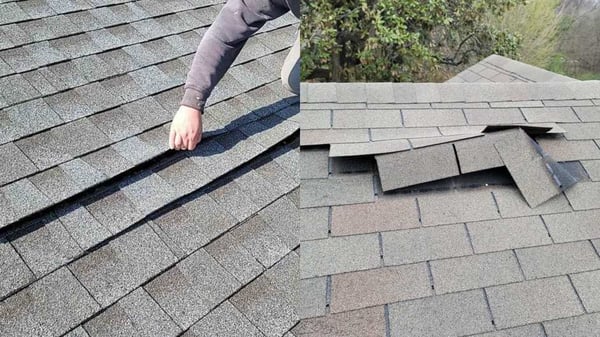
Just know that all of these storm damage signs can also be a sign of improper installation. Unfortunately, this is an easy denial because homeowners insurance policies don't cover improperly installed roofs, even with clear signs of storm damage.
4. Dents in roof vents, roof flashing, and shingles
The next sign of storm damage to your roof is dents to the shingles and other roofing components. This sign is the hardest to identify without a trained eye.
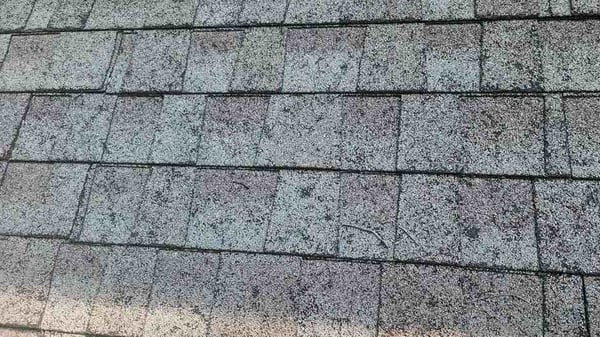
To spot this sign of storm damage to your roof, look for dents large enough (around 1” in diameter) to damage the shingles. Hail this size leads to granule loss and causes enough damage to compromise the integrity of your roof.
Finding dents on shingles is tricky, which is why you should look at the other roofing components. Check your roof vents, roof flashing, or any other metal for dents that clearly show signs of hail damage.
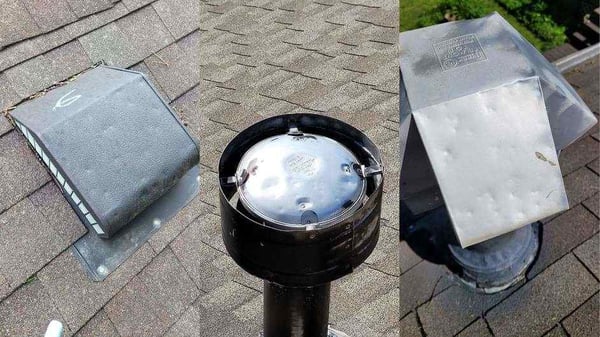 (Hail damage to vents on a roof)
(Hail damage to vents on a roof)
If the hail was strong enough to dent your roof vents or metal, you’ll definitely have storm damage to your roof.
5. Tree limbs or a full tree hitting your roof
The last sign of storm damage to your roof is finding large tree limbs on your roof. Along with missing shingles, this sign is the easiest to identify.
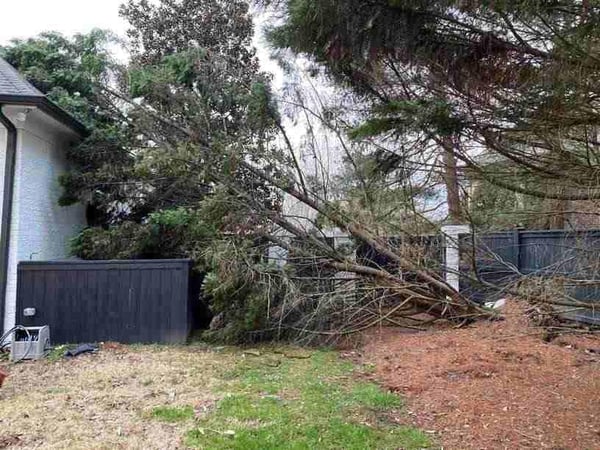
If a large tree limb or full tree hits your roof, then there’s no question that your roof is damaged. However, tree damage usually is more severe than damaging a section of shingles.
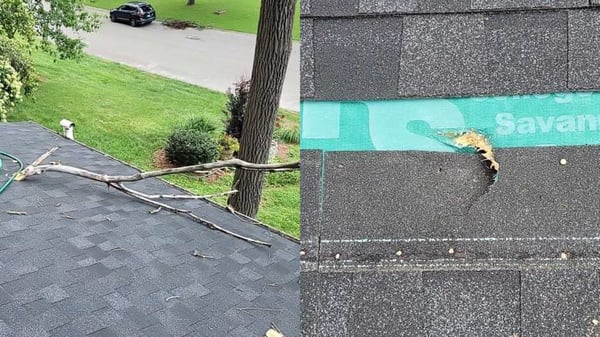 (Tree limb that punctured through roof to attic)
(Tree limb that punctured through roof to attic)
If the tree limb is large and heavy enough, it’ll also damage your roof decking and other roofing components. There are also plenty of cases where a tree limb goes straight through the roof into the attic.
That’s why I recommend keeping trees around your roof trimmed to avoid potential storm damage. But if a storm is strong enough, there’s not much you can do about a falling branch or tree.
What are the steps to file an insurance claim for storm damage to your roof?
Now you know the 5 common signs of roof damage. With this information, you have the ability to go outside and identify if your roof has storm damage.
However, a lot happens between you identifying storm damage and getting your homeowners insurance to pay for a new roof. Unfortunately, most homeowners get frustrated with the process because they simply don’t understand it.
Well, the best way to understand the process is to know the steps you should take. That’s why I wrote another article breaking down the 5 step process of filing a roof claim for storm damage.
Check out 5 Steps to File a Roof Damage Insurance Claim to learn what to expect during the claim process before fling.


